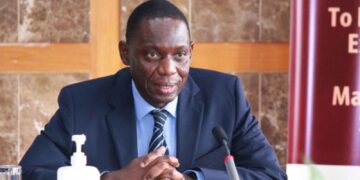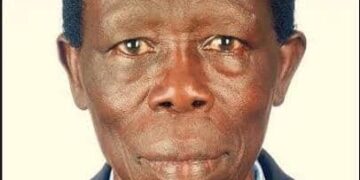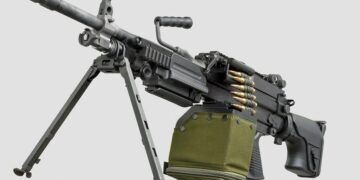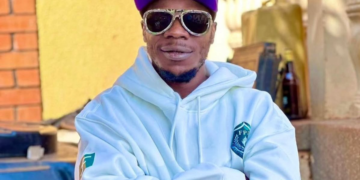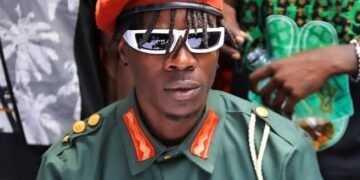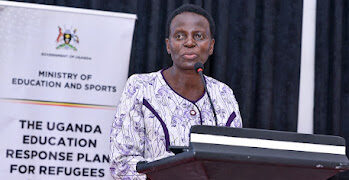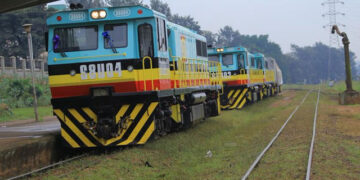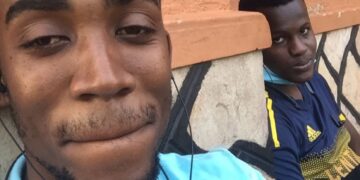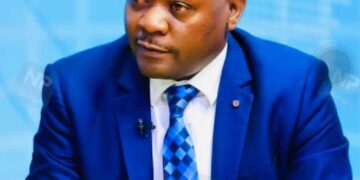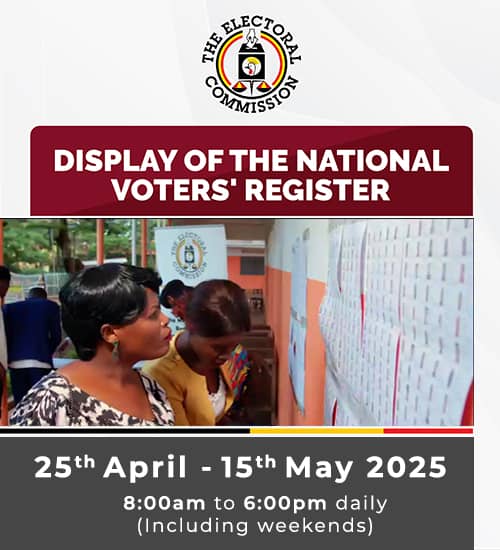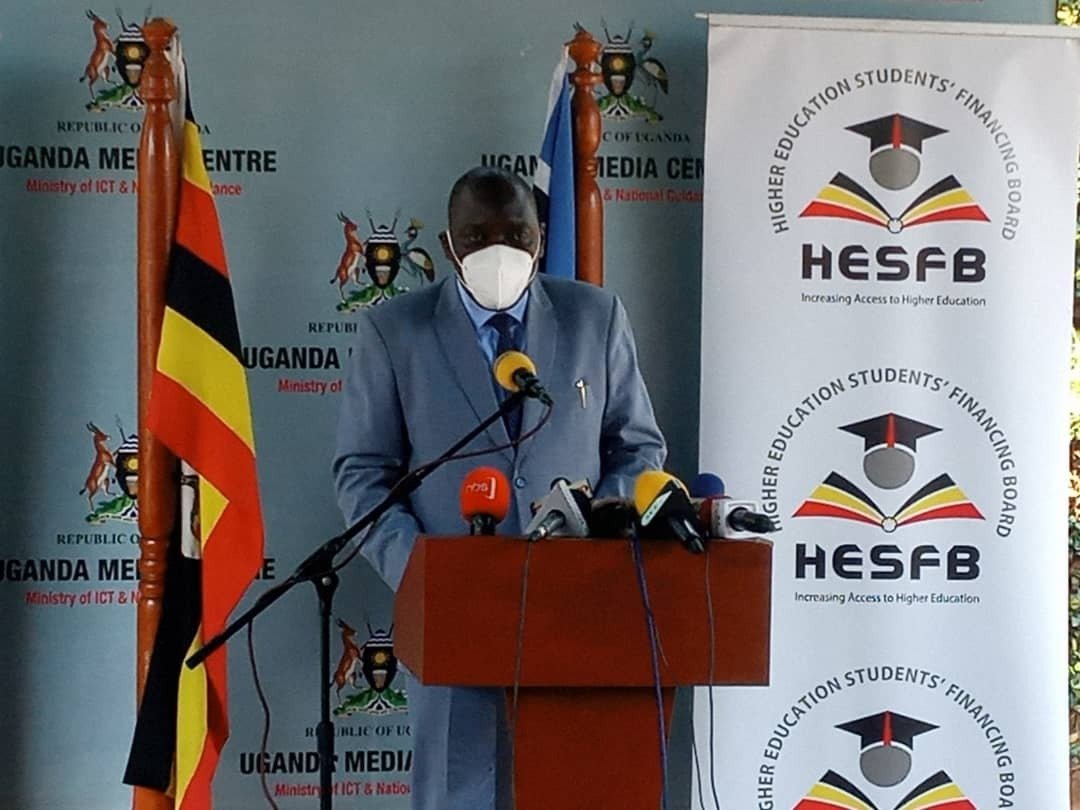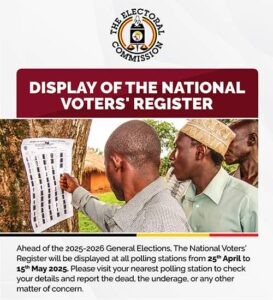David Oyite Ojok was a Ugandan military commander who was very loyal Uganda’s two-time president, Dr Milton Obote. In the early 80’s, Ojok was however caught in the rivalry between the two northern tribes that dominated the army -the Langi (Obote and Oyite Ojok’s tribe) and the Acholi (Tito Okello – the Army Commander’s tribe), a rivalry that is greatly attributed to the fall of Obote II government at the first half of 1980; a rivalry that is also believed to have culminated into his death.
It was 1983, and the Uganda National Liberation Army (UNLA) Chief of Staff, Major General David Oyite Ojok was at the peak of his military career. He was highly adored and respected by both soldiers and civilian populations in Uganda. The Milton Obote II government was struggling to shake-off internal tribal conflicts within the army and an armed rebellion in the Central region of the country, led by Yoweri Museveni. The rebellion was taking its toll on the government, and was fueling discontent in the military as majority of the army foot soldiers were Acholi, and it was they who suffered most casualties in the war.
Commander Maj. General Oyite Ojok, set out on a journey to the rebel infested area in what was named Luwero Triangle aboard a helicopter gunship in which he died; a journey that was his last. His death has been widely discussed but the real cause remains a matter of controversy with some accounts claiming he could have been a victim of an accident while others point to a premeditated execution fueled by intrigue within high-ranking individuals in Obote II government.
In his book; “I saw ‘Oyite Ojok Die,” Akena Rufino, Oyite Ojok’s hipersonal Aide who spent many years serving under him, and traveled together with Ojok on what was to be his last assignment, is another account sabasaba explored for a wider scrutiny of Oyite Ojok’s death.
According to Akena, reports had reached Oyite Ojok that National Resistance Army rebels had poisoned drinking water sources in Luwero Triangle causing the death of many government soldiers and Ojok had to rush to handle the matter. In the process, Ojok hired a European Chemist named Franklin to decontaminate the water. He narrates the last moments of an enigmatic figure to Ugandans especially the army of the 70’s and 80’s.
At the Nile Mansions’ compound (The current Serena Hotel) stood two Helicopter gunships; one smaller and another one bigger, ready to transport a team of army officers to the rebel infested zone. Nine people including David Oyite Ojok boarded the bigger chopper together with his aide (narrator), Capt Rufino Akena on his side. Akena writes that on take-off, the engine of the gunship roared and lifted off the ground but within a few seconds it suddenly lost control and abruptly descended pounding itself hard on the ground.
Akena says he turned to his boss and expressed his doubt over the mechanical safety of the plane, the concerns which Ojok dismissed. Thereupon, Akena stepped out of the helicopter gunship and politely asked his boss to allow him fly in the smaller chopper piloted by one named Captain Oringi. Akena says his decision was regarded by his boss as an act of cowardice which later saved his life to tell the story.
“So, Oyite Ojok remained in the helicopter, got it restarted, and off we left flying safely through the skies of Kampala into Luwero Triangle and finally landed at a Military Base in Kasozi, Luwero, where we were joined by the chemist, Flanklin, who travelled by road. As we flew from Kampala, I could hear communications between pilots of the two helicopters since the communication systems were interlinked. For instance; Ojok’s pilot would tell mine “it is cloudy”. “Correct” replied the other pilot.”
“Immediately upon landing, Chief (Ojok) was led to the contaminated swamp and the processes to decontaminate the water were conducted. To assure the boss (Ojok) that the water was now safe, the chemist scooped and drank the water. Commander also drank as well as other army officers. At sunset, he and the group boarded the helicopters heading back to Kampala.”
“Immediately after the helicopters took to the sky, we heard a radio message instructing Colonel Wilson Okwanga who was in charge of Ojok’s helicopter in Acholi dialect; “Tere wunu wa Owiny Kibul Wek gingide matinotino, gitede dano gucam wek tek cwinye no bene okobbe bot joo-waa” (Take him up to Owiny-kibul, cut him into pieces, cook and feed him to our people so that they may inherit his bravery). Col. Okwanga was the Chief Army surgeon and head of Mbuya Military hospital. When we heard that someone was to be cut into pieces, we became more attentive to radio messages and follow closely what was going on in the Chief’s (Oyite Ojok) helicopter.”
Akena says everyone in the helicopter felt concerned to hear that someone was to be chopped and a conversation ensued in both helicopters and when Ojok heard the instructions being emphasized, he asked Okwanga, what the issue was about. Ojok also found out that the helicopter was being flown towards the North instead of going Southwards in the direction of Kampala. This prompted him to radio the Director of Uganda Airforce, Lt. Col. Fred Otto what the matter was.
“So Oyite Ojok fumed and Okwanga snapped “Shut up!” This got Ojok enraged and interjected, “what have you just said Okwanga? Tin ibineno gin ma ayon oneno I poto ngor! (Today, you will be subject to a harsh treatment the way a farmer deals with a monkey caught destroying crops).”
Hearing this and seeing Ojok’s plane headed north, Akena says he felt enraged and ordered the pilot of the smaller plane to fly in front of the bigger airplane to compel it change direction. He said he was ready to die if the pilot of the bigger helicopter decided to crash into the smaller one. Unfortunately, Akena says, the pilot declined saying his craft was too small to force a gunship to oblige.
At this point, Akena says he heard Oyite Ojok tell his other aides (a one Kato and Friday who were seated with him in the bigger helicopter); “Since Otto and Okwanga are determined to fly us to an unknown destination, Abili, Yikere me too! (Luo) Friday, (his other aide) kaa Tayari ku kufa! (Kiswahili), Kato, be ready to die” As soon as Oyite Ojok said these words, the aircraft exploded.
“Straight away, we believed that Oyite Ojok took his grenade and blew the helicopter probably dreading abduction and being subjected to an agonizing death.” He says, when nearby UNLA soldiers rushed to the crash scene, they couldn’t believe their eyes. The giant helicopter was completely consumed by the explosion leaving behind no trace of human remains. Only Ojok’s pip was salvaged from the ruins.”
Akena writes that he then knew that Army Commander Tito Okello (an Acholi army commander) and Vice President Paulo Muwanga had achieved their goal of killing Oyite Ojok who he claims wanted him dead. Upon return to Kampala, he says he immediately confronted Tito Okello accusing him over Ojok’s death. He also broke the news of Ojok’s death to President Milton Obote who was in India at the time.
He also claims there had been constant intelligence reports showing that Paulo Muwanga was collaborating with the two Okello’s; (Tito Okello and Bazilio Okello), to topple Obote II government. However, in spite of the reports, Obote did nothing to stop them. He says Obote counted days town to the 1985 election to drop the two conspirators while the coup plotters also worked tirelessly to overthrow the government before the elections.
Documented account indicates that the group hostile to Oyite Ojok and Obote also wanted to engage in peace talks with the guerrillas of the NRA. Meanwhile, the elite Special Forces and most of the officers closest to Obote were Langi – and were fiercely opposed to any negotiations with the NRA. This rivalry came to a head at the time of Oyite-Ojok’s fatal crash in December.
The manufacturers of the helicopter, Bell of Texas in the United States and Agusta Bell in Italy later sent investigators to Uganda who were joined by aviation safety crews from the Ugandan Civil Aviation Authority. The combined Agusta Bell-CAA investigation discovered that the rod; the smaller propeller that rotates at the upper tail of helicopters and helps stabilize the craft during flight had either been broken or damaged enough to later break off in the first few minutes of the return flight to Kampala.
However, sources show the chopper underwent regular and careful inspection which makes it more unlikely that the rod would have got so worn out over time as for technicians to fail to notice it.
Other sources say the fateful helicopter might have been a tool of intrigue within the airforce involving Ugandan pilots and Canadian technicians who were helping re-build the airforce after it was depleted by the 1978-79 war. The claim is that the Canadians targeted Capt Oringi, not knowing that Oyite-Ojok would fly on that same aircraft after his own was grounded at Entebbe.
Whatever the truth to all these rumours, conspiracy theories and reports, the full story of the death of Maj Gen David Oyite-Ojok remains as far from conclusive.
To advertise on this website or send a story for publishing, please call 0701609906 or send mail to prince.apol@yahoo.com
Book cover; I saw Oyite Ojok Die By Capt. Rufino Akena. Kindle edition available at Amazon.com.

















